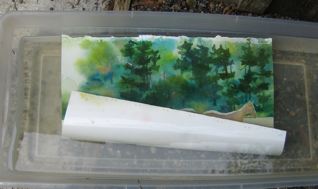
Every time you dip your brush, are you aware that you are making AT LEAST seven choices? Forget one and it’s…..ooops!
It is important to be clear what they are and focus on them until they become an unconscious checklist. Can you guess what they are?
1. Always you are paying attention to HOW WET IS THE PAPER , and with that amount of wet


2. HOW MUCH WATER DO I WANT ON MY BRUSH?
3. And HOW MUCH PAINT?
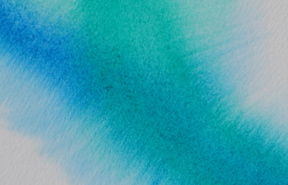 It is a ratio:
It is a ratio:
When the paper is more wet, you want less water on your brush and more paint.
When the paper is dry (drier), you need more water and less color.
No matter what else you are doing, you are ALWAYS paying attention to how wet the paper is, how much water is on your brush and how much color.
4. Okay, you have your paper ready and your brush is the right amount wet. Next? WHAT COLOR – Blue? Violet? Green? Yellow? Orange? Red? So you choose one… Let’s say VIOLET… so you stick your brush in your violet, swish it around and put it down….
 5. What is the VALUE? Is it too dark? Or not dark enough?
5. What is the VALUE? Is it too dark? Or not dark enough?
That is an easy one in watercolor – more paint to go darker, less paint and more water to be lighter.
6. What about the TEMPERATURE? Maybe it is too warm, too red a violet. Then you need to mix some blue with it. Or maybe it is too cool and you need to add a little red.
You go sideways on the color wheel to change the Temperature. Move toward the color of hot coals to go warmer. Go toward the color of glacial ice to go cooler (but be sure you only have two primaries involved in your mix — red & blue in this instance).
 7. What happens if you get the third primary involved? That’s right — it goes DULL. Pigments are their brightest as they come out of the tube as long as they have no more than two primaries. When your violet is too BRIGHT, you dull it with…?
7. What happens if you get the third primary involved? That’s right — it goes DULL. Pigments are their brightest as they come out of the tube as long as they have no more than two primaries. When your violet is too BRIGHT, you dull it with…?
Yellow? That will work. You can also dull with green. Why? Green is made of yellow and blue. So you are dulling it AND cooling the violet. Or you could mix it with orange, dulling AND warming it.
 8. There is one more: do you want a clear pigment? Hint: works great with the wet paper as it soaks in and dyes the paper, bonding with it when it is dry. It doesn’t work well as a heavy dark in a late glaze. Then I choose a sedimentary pigment. For more on this see: October 2010 Technique Corner, What about Pigments? and Choosing Pigments for Layering, January, 2011, as well as How to Make Mud, 2/11.
8. There is one more: do you want a clear pigment? Hint: works great with the wet paper as it soaks in and dyes the paper, bonding with it when it is dry. It doesn’t work well as a heavy dark in a late glaze. Then I choose a sedimentary pigment. For more on this see: October 2010 Technique Corner, What about Pigments? and Choosing Pigments for Layering, January, 2011, as well as How to Make Mud, 2/11.
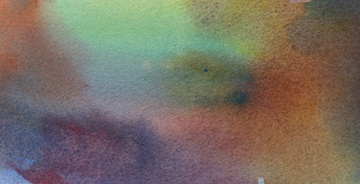
Can you remember 8 things simultaneously while you paint — as well as thinking about how you want to paint? Sure you can. It is like a music score where there is a staff for the violins, another for the violas, the flutes, clarinets, trumpets, trombones and drums. They all come together – loud and soft, or maybe resting for a measure but the conductor and the savy listener can follow them all.
But it takes practice. And being aware:
1. How wet is my paper?
2. How much water, then, do I need on my brush?
3. How much paint with that amount of water?
4. Which color?
5. Light enough, or dark enough?
6. Warm enough or cool enough?
7. Bright enough or dull enough?
8. Clear version of that hue or sedimentary?
The painting soaking in the first photo, above, was The Light Brigade. Below on the left is a photo taken before that soak after which it had one last the wet-on-wet glaze – mainly in the grass and trees:
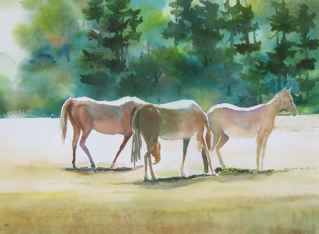
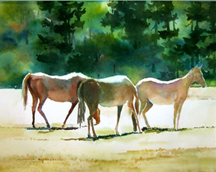
On the left below, I am adding color while a) the paper is wet b)not much water on my brush c) quinacridone burnt orange mixed with some d) red and e) violet to get a dark rich brown for the dog’s’ hair in He’s Coming! On the right is now the dogs looked at the end of that wet blending. It is a little extra gold since it was taken inside at night.


At the bottom is the final painting: wet and dry, soft edges and hard, glazes of different colors — bright, dull, warm, cool, light, dark, dyes and sedimentary.
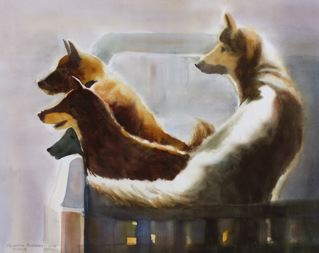
He’s Coming!
Happy painting!
Caroline
© Caroline Buchanan, 2013
